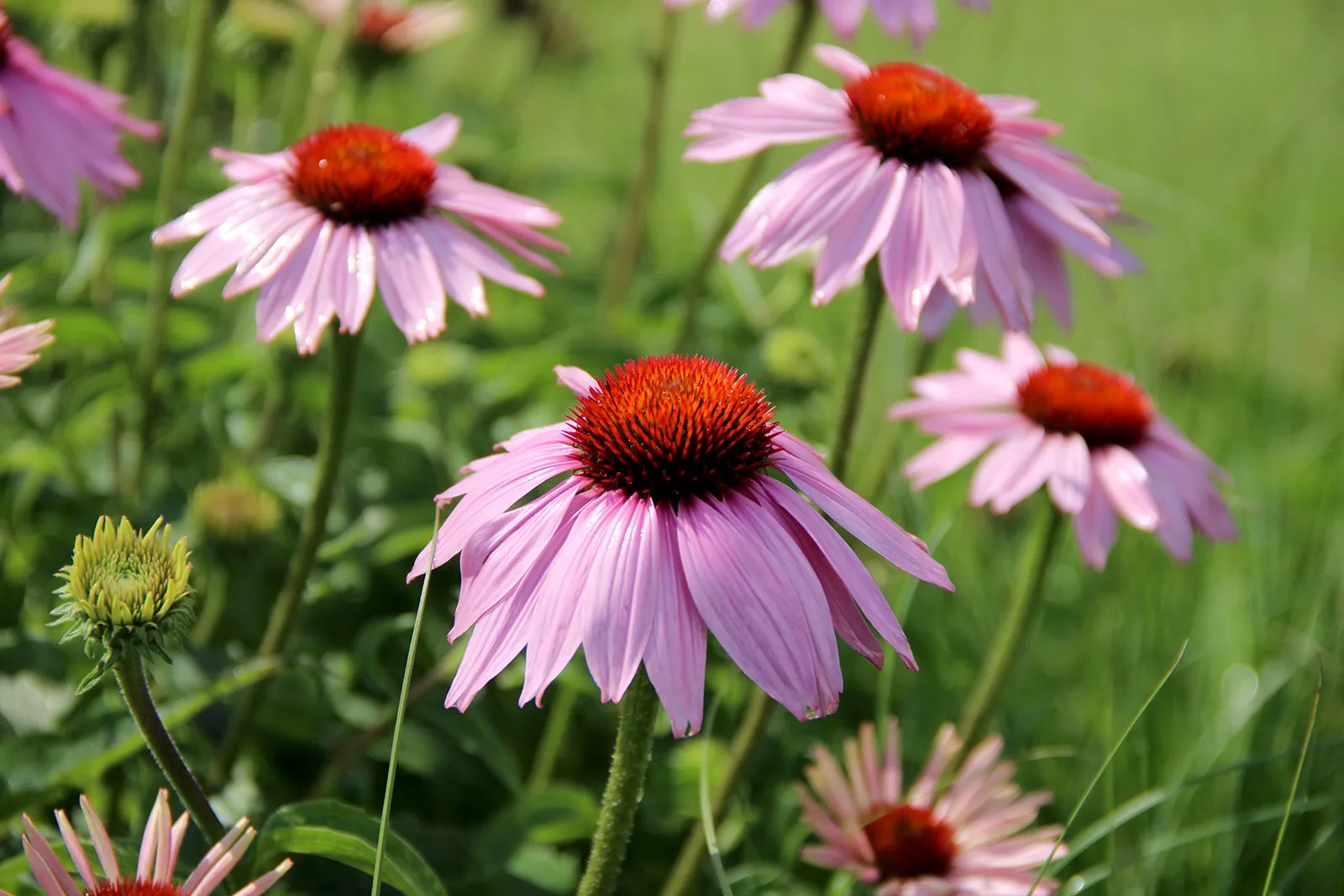
Coneflowers are more than just pretty blooms in your garden. These vibrant flowers, also known as Echinacea, have a rich history and a variety of uses that might surprise you. Did you know that coneflowers were used by Native Americans for medicinal purposes? They believed these plants could treat infections and wounds. Today, many people still use coneflower extracts to boost their immune systems. These hardy perennials are not only beautiful but also attract pollinators like bees and butterflies, making them a favorite among gardeners. Want to learn more about these fascinating plants? Here are 27 intriguing facts about coneflowers that will deepen your appreciation for this garden staple.
What is a Coneflower?
Coneflowers, also known as Echinacea, are popular for their vibrant colors and medicinal properties. These hardy perennials are native to North America and have been used for centuries in traditional medicine.
- Echinacea is derived from the Greek word "echinos," meaning hedgehog, due to the spiny central disk of the flower.
- There are nine species of coneflowers, with Echinacea purpurea being the most common.
- Coneflowers belong to the daisy family (Asteraceae), sharing this family with sunflowers and asters.
- Native Americans used coneflowers to treat infections and wounds.
- Echinacea is believed to boost the immune system and is often used in herbal remedies.
Growing Coneflowers
Coneflowers are relatively easy to grow, making them a favorite among gardeners. They thrive in various conditions and require minimal maintenance.
- Coneflowers prefer full sun but can tolerate partial shade.
- They are drought-tolerant once established, making them ideal for xeriscaping.
- These plants can grow in poor soil conditions, though they prefer well-drained soil.
- Coneflowers can reach heights of 2 to 5 feet, depending on the species and growing conditions.
- They bloom from mid-summer to fall, providing long-lasting color in gardens.
Coneflower Varieties
There are several varieties of coneflowers, each with unique characteristics. These varieties offer a range of colors and sizes to suit different garden styles.
- Echinacea purpurea is the most common variety, known for its purple petals.
- Echinacea pallida has pale pink to white petals and a more delicate appearance.
- Echinacea paradoxa is unique for its yellow petals, unlike the typical purple hues.
- Echinacea tennesseensis is a rare species native to Tennessee, with pinkish-purple petals.
- Hybrid varieties, such as Echinacea 'Cheyenne Spirit', offer a mix of colors, including red, orange, and yellow.
Medicinal Uses of Coneflowers
Coneflowers have been used in traditional medicine for centuries. Modern research supports some of these uses, particularly for immune support.
- Echinacea is commonly used to reduce the duration of colds.
- It has anti-inflammatory properties, making it useful for treating minor skin irritations.
- Some studies suggest that Echinacea may help reduce anxiety.
- The plant contains antioxidants, which can help protect cells from damage.
- Echinacea supplements are available in various forms, including teas, capsules, and tinctures.
Wildlife Benefits
Coneflowers are not only beneficial to humans but also to wildlife. They attract a variety of pollinators and provide food for birds.
- Coneflowers attract bees and butterflies, making them excellent for pollinator gardens.
- The seeds of coneflowers are a favorite food for goldfinches and other small birds.
- Planting coneflowers can help support local ecosystems by providing habitat and food sources.
- Coneflowers are deer-resistant, making them a good choice for gardens in areas with high deer populations.
- They can also attract beneficial insects, such as ladybugs and lacewings, which help control garden pests.
Fun Facts About Coneflowers
Coneflowers have some interesting and lesser-known facts that make them even more fascinating.
- Coneflowers can be used to make a natural dye for fabrics.
- The roots of Echinacea plants have a distinctive smell, often described as sweet and spicy.
Coneflower Facts You Can't Ignore
Coneflowers, or Echinacea, are more than just pretty blooms. They’re hardy perennials that thrive in various climates, making them a gardener's favorite. Their medicinal properties have been valued for centuries, especially in boosting the immune system. These flowers attract pollinators like bees and butterflies, contributing to a healthier ecosystem.
Planting coneflowers is straightforward. They need well-drained soil and plenty of sunlight. Once established, they require minimal maintenance. Their drought tolerance makes them perfect for water-wise gardens.
Coneflowers come in various colors, from the classic purple to vibrant reds and oranges. This diversity adds a splash of color to any garden. Plus, their long blooming season ensures your garden stays lively for months.
Whether you're a seasoned gardener or a newbie, coneflowers offer beauty, resilience, and ecological benefits. Give them a spot in your garden, and you won't be disappointed.
Was this page helpful?
Our commitment to delivering trustworthy and engaging content is at the heart of what we do. Each fact on our site is contributed by real users like you, bringing a wealth of diverse insights and information. To ensure the highest standards of accuracy and reliability, our dedicated editors meticulously review each submission. This process guarantees that the facts we share are not only fascinating but also credible. Trust in our commitment to quality and authenticity as you explore and learn with us.


